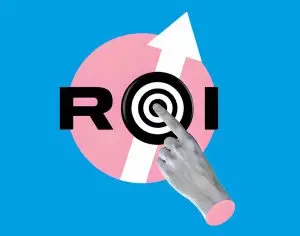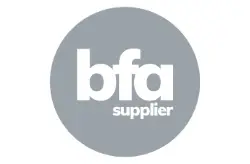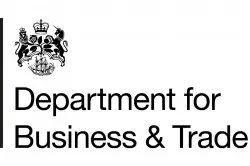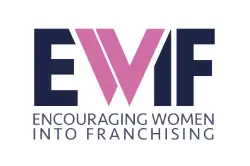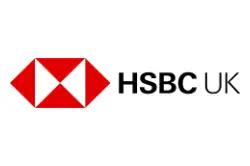Finally, to the relief of many, the Bank of England has reduced the Bank Rate from 5.25% to 5%. The last time we saw an interest rate reduction was in March 2020, at the start of the Covid outbreak. Since then rates have climbed ever since, and remained at 5.25% for the past year – the highest rate in the UK for 16 years.
The decision of the Monetary Policy Committee was helped by the fact that inflation has fallen back to the 2% target, and held steady at that level for 12 months. It was a closely-run decision however. 4 out of the 9 members of the Committee voted to maintain rates at their current level.
The good news
As the Bank of England rate largely dictates the cost of borrowing set by High Street banks, higher interest rates over the past years have helped returns for savers, but undeniably put pressure on household finances. This recent reduction paves the way for reductions in bank and building society mortgage lending rates. HSBC, NatWest and Barclays have already reduced mortgage rates, with more lenders expected to follow suit.
In the same vein, the interest rate cut is the first step towards the easing of commercial borrowing. The relatively high level of rates over the past 5 years has been a barrier to growth and investment, both for franchisors and franchisees. More affordable borrowing should boost the number of franchisees willing to invest in the expansion of their businesses. Good news for franchisors working hard to recruit new franchisees, as well as established franchisors who welcome higher profits when lending costs reduce.
A drop in interest rates typically has a marked impact on consumer mood, boosting optimism and increasing willingness to spend, when consumers perceive that it costs them less to spend on their mortgage and credit cards.
In newspaper headlines, it is typically mortgage lending rates and house prices that outshine any other analyses. Halifax is already optimistically pointing to an uptick in house prices over the rest of this year. But all business sectors, including in franchising, potentially stand to reap the benefit, although some sectors more than others. Discretionary spend on restaurants and entertainment can be expected to see growth. Less so for essential services, such as domiciliary care.
We should bear in mind that one interest rate cut will not of itself move the dial much. More significant is whether people feel optimistic that lending rates will continue to fall. An expectation of lower rates is essential for economic growth. The new Labour government has made it clear that they need to drive growth in order to fill their inherited “black hole” in the Treasury’s finances.
Is it all good news?
Is an economic boom on the cards? Unfortunately, this is not on the immediate horizon. Whilst a downward trend in rates in the coming 18 months is broadly expected, both in the UK and overseas, no-one predicts a reduction in the short term back to the historically low levels that presided in the 2010s, particularly not the extraordinary low of 0.1% in December 2021. Some forecasters predict a base rate of 4.5% by the end of 2024, and 4% by the end of 2025.
Andrew Bailey, the Bank of England’s governor, said a decision to cut interest rates is “an important moment in time” but warned people not to expect a sharp fall in the coming months. Lower inflation had paved the way for the fall in interest rates but has made it clear it is “not mission accomplished yet”.
Why not? The counter-balance to interest rate cuts is inflation. In theory, inflation and interest rates have an “inverse” relationship: When rates are low, inflation tends to rise. When rates are high, inflation tends to fall.
Inflation impacts the cost of living, which itself increases the risk of recession. It is for that reason that the Bank of England are determined to take a very measured and cautious approach.
The National Institute of Economic and Social Research currently predicts that the UK’s economic recovery will accelerate over the next year, and that this will force the Bank of England to keep interest rates higher for longer. Stating that a modest economic recovery and the threat from persistent inflationary trends will make the central bank more cautious about reducing the cost of borrowing.
What is on the horizon for the UK economy?
Analysts predict the UK economy will gain momentum later this year, potentially leading companies to ramp up recruitment to meet increased demand. The Bank of England recently revised its GDP growth forecast for 2024 upwards to 1.25% per cent from 0.5%.
In its annual revisions, the Office of National Statistics upgraded its estimates of the UK’s post-Covid economic recovery. The economy expanded by 4.8 per cent in 2022, up from an initial estimate of 4.3 per cent. The contraction in Gross Domestic Product in 2020 was revised to 10.3 per cent, less severe than previously thought.
According to the ONS, by the end of 2022 the economy was 2.1% larger than its pre-Covid size, an improvement on their earlier estimate of 1.9%. The UK’s recovery was initially considered the slowest among the G7, but revised data shows it was around the group’s average.
Jon Holt, chief executive and senior partner of KPMG in the UK, has been quoted in the press as saying “With forecasts for economic growth improving and potential further interest rate cuts in the coming months, there are green shoots of economic recovery.”
It is thought that some businesses might delay hiring until after Chancellor Rachel Reeves presents her first budget on 30th October, seeking more clarity on fiscal policy. The chancellor has indicated that tax increases are on the horizon. This too will have an impact on consumer optimism and demand.
The future for franchising?
When it comes to franchising, there are good reasons for optimism, both for franchisors and for franchisees.
Undeniably, the first signal for years towards lower lending rates is a positive thing. But in addition, it is well-known that of all commercial models, franchising can be significantly more resilient than others.
The proven business model and built-in support system mean that a franchisee is statistically far more likely to succeed than a new business owner going their own way.
The brand recognition that comes with a good franchise, and the investment in national regional marketing campaigns by the franchisor, clearly give franchisees a level of protection against recession.
Franchise ownership often requires a long-term perspective. No investment is entirely risk-free, and no-one can bet with complete certainty on the economic outlook in the UK and elsewhere in coming years. However, when carefully selected and managed, a franchise can weather economic storms and thrive.




